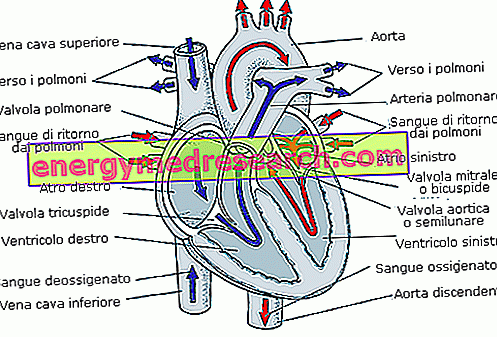Generality
Conjunctivitis in children is a widespread disorder, but it should not be underestimated, in order to avoid the onset of complications that can also be serious.

Generally, conjunctivitis in children is an easily diagnosable and treatable disorder; however, if you suspect that your child may be suffering from conjunctivitis, you should always contact the pediatrician.
Causes
The main causes that can trigger conjunctivitis in children are bacterial infections, viral infections and allergies. In these cases, we speak respectively of: bacterial conjunctivitis, viral conjunctivitis and allergic conjunctivitis .
Other causes that could favor the onset of conjunctivitis in children are the presence of foreign bodies and the penetration of chemical substances into the eye; in these cases, therefore, we speak of irritative conjunctivitis .
Finally, even the possible obstruction of the tear duct could favor the appearance of this disorder, particularly in newborns.
Contagion
When at the origin of conjunctivitis in children there is a bacterial or viral infection, its transmission can occur easily through direct contact with the child or with objects that may be contaminated by the micro-organisms responsible for the infection (towels, clothes, sheets, etc.).
The infection occurs very easily even in places frequented by children, such as kindergartens and schools. It is precisely for this reason that in the case in which the child is suffering from infective conjunctivitis, it would be good to leave him at home until the completion of the drug therapy prescribed by the doctor.
Symptoms and Complications
The symptoms of conjunctivitis in children may be different depending on the cause that triggered the infection. However, some symptoms are common to all forms of conjunctivitis, including:
- Eye redness;
- Swelling;
- Burning;
- Itching, which occurs intensely in allergic conjunctivitis;
- Feeling of having a foreign body in the eye;
- Increased tearing;
- Crusting due to excessive tearing.
Typical symptoms of infectious conjunctivitis are: photophobia, palpebral edema, hyperemia and pus formation (in particular, in the bacterial form).
If not timely diagnosed or if not properly treated, conjunctivitis of infectious origin can involve the cornea, causing serious consequences.
Therapy
Of course, the pharmacological treatment of conjunctivitis in children depends on the cause that caused it and that must be ascertained by the doctor.
However, regardless of the type of active ingredient used, it is customary to use pharmaceutical formulations suitable for ocular administration, such as eye drops, for the treatment of conjunctivitis in children.
In the case of bacterial conjunctivitis, therefore, the doctor will prescribe the administration of antibiotic eye drops. Among the active ingredients that can be used we recall tobramycin (Tobradex®, Tobral®).
In the case in which, instead, the conjunctivitis is of an allergic type, the doctor can prescribe the administration of antihistamine drops. However, in these cases it would be good to take the child to an allergist, who will evaluate the allergy problem as a whole by establishing the most suitable therapy for each case.
Finally, in the case in which the conjunctivitis is triggered by viral infections, usually, the pharmacological treatment with antivirals is not foreseen; in these cases, generally, the doctor limits himself to prescribe an anti-inflammatory therapy to alleviate the symptoms of the disorder and eventually a therapy with antibiotic eye drops to prevent the onset of possible bacterial superinfections.
As stated, the choice of therapy lies solely and exclusively with the doctor; therefore, do-it-yourself treatment of conjunctivitis in children is absolutely not recommended, as the misuse of drugs could be harmful and counterproductive.
Precautions and precautions
Conjunctivitis in children is a very annoying disorder, but if properly treated it can be resolved quite simply.
Fortunately, in many cases, the onset of infectious conjunctivitis can be prevented by adopting simple measures, such as:
- Clean the child's eyes often and carefully, but having the foresight to wash their hands before proceeding with cleaning;
- Teach the child not to touch his eyes, especially with dirty hands;
- If a family member has infective conjunctivitis, avoid direct contact with the child;
- Do not share towels, sheets, clothes, etc. with other family members suffering from infective conjunctivitis.



